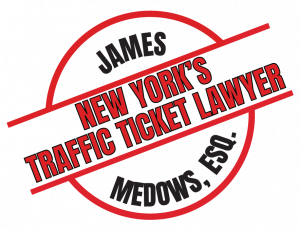
New Report Reveals Dangerous Deterioration of New York’s Roads Despite Record Tax and Toll Revenues
43% of NY roads are in poor shape, 10% of bridges are unsafe, yet tolls rise. James Medows demands action to fix NYC’s crumbling infrastructure.
According to the report, compiled using sources including the TRIP Transportation Research Group, NYC Department of Transportation, and New York State bridge inspection records, 43% of New York’s major roadways are classified in poor or mediocre condition. Meanwhile, nearly 10% of bridges statewide are structurally deficient, threatening both public safety and economic stability.
"New Yorkers are paying more than ever to drive on some of the most unsafe and neglected roads in the country," said James Medows, Esq., who has represented thousands of drivers in traffic-related matters. "This isn’t just about inconvenience. It’s about emergency response delays, damage to vehicles, and a system that continues to extract from drivers while failing to deliver even the basics."
Key Findings:
Road Quality: 43% of major state roads are in poor or mediocre shape. NYC streets frequently show signs of long-term neglect: potholes, cracked surfaces, and water-damaged foundations.
Bridge Deterioration: Nearly 1,700 of New York’s 17,000+ bridges are structurally deficient. Major corridors like the Brooklyn-Queens Expressway and I-95 are flagged in critical need of repair.
Congestion Costs: In 2024, traffic congestion cost NYC drivers an estimated $9.5 billion in productivity losses. Midtown speeds dropped to a historic low of 4.8 mph.
Emergency Response Delays: Average EMS response times for non-life-threatening emergencies have grown from 8.3 minutes to 23.3 minutes over the last decade, with life-threatening cases seeing similar trends.
Revenue Discrepancy: Despite rising congestion tolls (\$9 per vehicle), ticket revenue, and MTA funding, street conditions continue to decline, with little transparency into how funds are applied.
Public Outcry and Legal Effort
Medows, who is leading this effort to drive legislative and judicial attention, says the public has a right to know how billions in traffic-related revenues are being spent. "If these funds aren’t improving safety, where are they going? New York’s infrastructure should reflect the taxes we pay—but it doesn’t."
Report Recommendations:
1. Annual Transparency Audits: Publish detailed spending reports showing where traffic fine, toll, and congestion pricing revenue is allocated.
2. Emergency Prioritization: Expedite resurfacing of critical roadways and bridges with public tracking dashboards.
3. Accountability in Spending: Mandate a percentage of funds from new toll and congestion zones be reinvested directly into road safety.
4. Technology and Traffic Flow: Improve signal timing, open emergency lanes, and reduce gridlock patterns that slow down ambulances and first responders.
### Real-World Consequences
The report includes incidents where infrastructure failures directly impacted lives. In June 2024, a man in Chelsea waited 37 minutes for an ambulance due to blocked intersections and bridge traffic. In the Bronx, firefighters were delayed by congestion on a flagged overpass—one scheduled for repairs three years prior.
About James Medows, Esq.
James Medows is a New York-based traffic attorney who has represented over 10,000 drivers in NYC and surrounding boroughs. His advocacy focuses on civil rights, traffic enforcement policy, and now, public safety through road infrastructure reform. He is spearheading this public campaign to demand answers from elected officials and transportation agencies.
Media Contact:
James Medows, Esq. | Public Infrastructure Advocate
Email: jamesmedows@gmail.com
Phone: (845) Tickets
https://trafficticketlawyernewyork.com/
**Sources below**
Road Conditions:
• 43% of New York’s major roads are in poor or mediocre condition: According to a 2024 report by TRIP, a national transportation research group, 43% of New York State’s major roads are rated in poor or mediocre condition. 
Bridge Conditions:
• Approximately 9.4% of New York’s bridges are structurally deficient: The American Road and Transportation Builders Association (ARTBA) reported in 2024 that out of 17,642 bridges in New York State, 1,664 (or 9.4%) are classified as structurally deficient. 
• Nearly every bridge in New York State requires some form of repair: A 2024 report highlighted that 99.46% of the state’s 17,642 bridges need maintenance, with almost 10% classified as structurally deficient. 
Traffic Congestion Costs:
• Traffic congestion cost NYC drivers $9.5 billion in 2024: A report from INRIX estimated that traffic delays cost New York City drivers a total of $9.5 billion in lost time and productivity in 2024. 
• Average speeds in Midtown Manhattan dropped to 4.8 mph: A report indicated that weekday speeds in Midtown Manhattan averaged 4.8 miles per hour, contributing to increased congestion and delays. 
Emergency Response Times
• EMS response times for non-life-threatening emergencies increased from 8.3 minutes to 23.3 minutes over the past decade: A 2024 analysis reported that non-life-threatening EMS response times more than doubled from 8.3 minutes to 23.3 minutes, indicating significant delays in emergency medical services. 
• Life-threatening EMS response times increased from 9.6 minutes to 12.4 minutes: The same report noted that life-threatening EMS response times increased from 9.6 minutes to 12.4 minutes, a 29% increase over the past decade. 
James Medows, Esq.
Traffic Ticket Lawyer New York
+1 845-842-5387
jamesmedows@gmail.com
Visit us on social media:
LinkedIn
Instagram
Facebook
X
Distribution channels: Business & Economy, Environment, Natural Disasters, Politics, U.S. Politics
Legal Disclaimer:
EIN Presswire provides this news content "as is" without warranty of any kind. We do not accept any responsibility or liability for the accuracy, content, images, videos, licenses, completeness, legality, or reliability of the information contained in this article. If you have any complaints or copyright issues related to this article, kindly contact the author above.
Submit your press release


